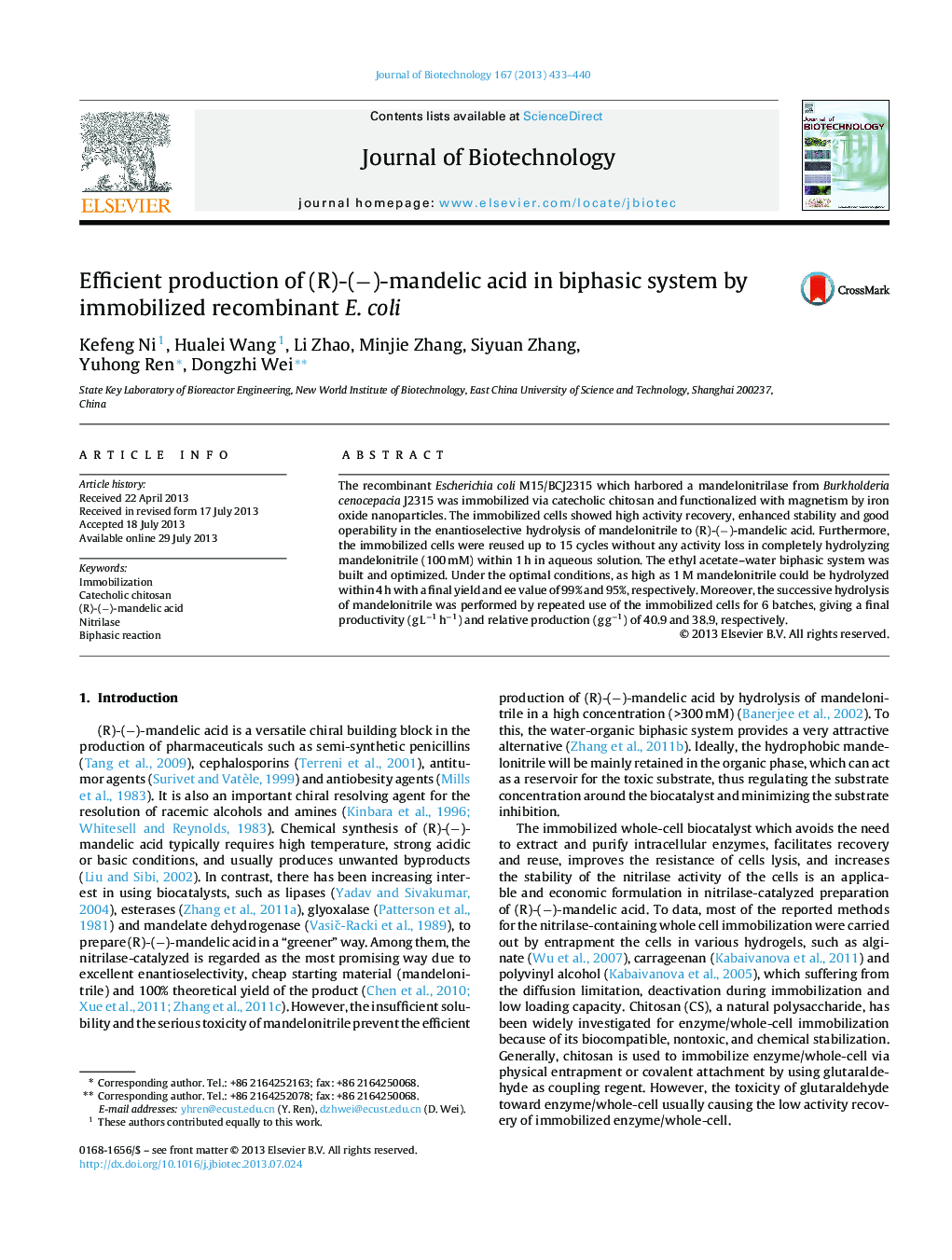| Article ID | Journal | Published Year | Pages | File Type |
|---|---|---|---|---|
| 6491778 | Journal of Biotechnology | 2013 | 8 Pages |
Abstract
The recombinant Escherichia coli M15/BCJ2315 which harbored a mandelonitrilase from Burkholderia cenocepacia J2315 was immobilized via catecholic chitosan and functionalized with magnetism by iron oxide nanoparticles. The immobilized cells showed high activity recovery, enhanced stability and good operability in the enantioselective hydrolysis of mandelonitrile to (R)-(â)-mandelic acid. Furthermore, the immobilized cells were reused up to 15 cycles without any activity loss in completely hydrolyzing mandelonitrile (100 mM) within 1 h in aqueous solution. The ethyl acetate-water biphasic system was built and optimized. Under the optimal conditions, as high as 1 M mandelonitrile could be hydrolyzed within 4 h with a final yield and ee value of 99% and 95%, respectively. Moreover, the successive hydrolysis of mandelonitrile was performed by repeated use of the immobilized cells for 6 batches, giving a final productivity (g Lâ1 hâ1) and relative production (g gâ1) of 40.9 and 38.9, respectively.
Related Topics
Physical Sciences and Engineering
Chemical Engineering
Bioengineering
Authors
Kefeng Ni, Hualei Wang, Li Zhao, Minjie Zhang, Siyuan Zhang, Yuhong Ren, Dongzhi Wei,
